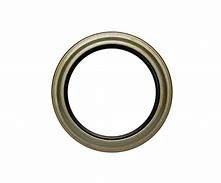Exploring the Importance of Steering Oil Seals in Automotive Systems
Understanding Steering Oil Seals Their Importance and Maintenance
Steering oil seals are critical components in the steering system of vehicles, playing an essential role in maintaining the integrity and performance of the steering mechanism. These seals help to prevent the loss of steering fluid, ensuring that the steering system operates efficiently and safely. In this article, we will explore the function of steering oil seals, the impact of wear and tear, and best practices for maintenance.
What is a Steering Oil Seal?
A steering oil seal is typically made from durable materials such as rubber or oil-resistant polymers. Positioned in the steering gear assembly, its primary function is to keep steering fluid contained within the system. The seal forms a barrier between the fluid and external contaminants, such as dirt, grime, and moisture, which could compromise the fluid's effectiveness and cause wear on internal components.
Importance of Steering Oil Seals
The steering system relies heavily on hydraulic fluid to assist in steering movements, providing the necessary power to turn the wheels. A malfunctioning oil seal can lead to fluid leaks, resulting in inadequate steering response and increased effort needed to turn the steering wheel. This condition not only affects driver comfort but can also pose significant safety risks by impairing vehicle control.
Additionally, leaks caused by faulty seals can lead to a reduction in steering fluid levels, which can further escalate into other mechanical failures. Over time, this can result in costly repairs. Therefore, maintaining the integrity of steering oil seals is vital for ensuring the longevity and reliability of the steering system.
Signs of Worn Steering Oil Seals
Identifying early signs of wear in steering oil seals can help prevent more extensive damage to the steering system. Some common indicators include
1. Fluid Leaks The most obvious sign of a failing oil seal is the presence of fluid pooling under the vehicle, particularly near the steering gear assembly.
2. Difficulty Steering If the steering feels unusually stiff or less responsive, it could indicate low fluid levels due to a leak.
steering oil seal

4. Contaminated Fluid If the steering fluid appears cloudy or contaminated, it could indicate that external elements are entering the system due to a faulty seal.
Maintenance and Replacement
Regular inspections of the steering system are crucial, especially in older vehicles or those that have experienced heavy usage. Mechanics typically recommend checking for signs of leaks and fluid condition during routine maintenance services.
If a worn or damaged oil seal is identified, it should be replaced immediately to avoid further complications. The replacement process generally involves
1. Fluid Drainage The steering fluid must be drained from the system before removing the seal.
2. Seal Removal Carefully removing the defective seal is critical to avoid damaging adjacent components.
3. Installation of New Seal The new steering oil seal should be installed according to manufacturer specifications, ensuring it is fitted correctly to prevent future leakage.
4. Refilling Fluid After the new seal is in place, the steering system is refilled with fresh fluid.
5. Testing the System Finally, a thorough test of the steering mechanism is conducted to ensure proper function and that no leaks are present.
Conclusion
Steering oil seals play an essential role in the optimal performance of a vehicle's steering system. By understanding their importance and recognizing signs of wear, vehicle owners can take proactive steps to maintain their steering systems. Regular maintenance not only helps in avoiding costly repairs but also ensures a safer driving experience. Always consult with a professional mechanic for guidance tailored to specific vehicle needs. Remember, when it comes to steering oil seals, a little attention goes a long way in preserving the reliability and safety of your vehicle.
-
Understanding the Front Main Engine Seal: Purpose, Maintenance, and Installation
News Jul.29,2025
-
Understanding O-Rings and Seal Rings: Types, Applications, and Custom Solutions
News Jul.29,2025
-
Understanding Crankshaft Oil Seals: Rear Seals, Pulley Seals, and Their Role in Engine Integrity
News Jul.29,2025
-
The Importance of Front and Rear Crankshaft Seals in Engine Performance and Oil Management
News Jul.29,2025
-
Crank Oil Seals: Functions, Types, and Cost Considerations in Engine Maintenance
News Jul.29,2025
-
A Comprehensive Guide to O-Rings and Seals: Types, Materials, and Global Applications
News Jul.29,2025
-
Mastering Diesel and Performance Engine Maintenance: A Guide to Critical Oil Gaskets
News Jul.28,2025
Products categories















